Table of contents
A good dictionary is one of the most fundamental language learning tools.
Of course, nothing can replace a good physical paper dictionary. They’re classic for a good reason: they’re effective.
But online dictionaries and translation apps are becoming better and better.
In my opinion, Google Translate is now one of the best free tools to improve your English. It has been essential for me in my life in Brazil while I’ve been learning Portuguese. I couldn’t imagine life without it.
But while I’ve been using it to learn the meaning of individual words and phrases for years, it’s only recently that I have discovered some of its other features.
If you’re not doing this already, I encourage you to learn how to use Google Translate for English learning. It’s very powerful.
In this article, I want to show you some of the lesser-known hacks and what they allow you to do so that you can make the most out of Google Translate.
1. You can use it to learn how to pronounce words
This is one of my favourite features; I use it all the time to help me learn Portuguese. This feature lets you hear how a word you’ve never seen before is supposed to sound. For a language that has a lot of strange words, like English, this is particularly useful.
How to do it:
- Open Google Translate on your web browser
- Type in the word or phrase you want to know how to translate
- Click on the little speaker icon
- Repeat the word or phrase out loud. If it’s long, you can also try shadowing.
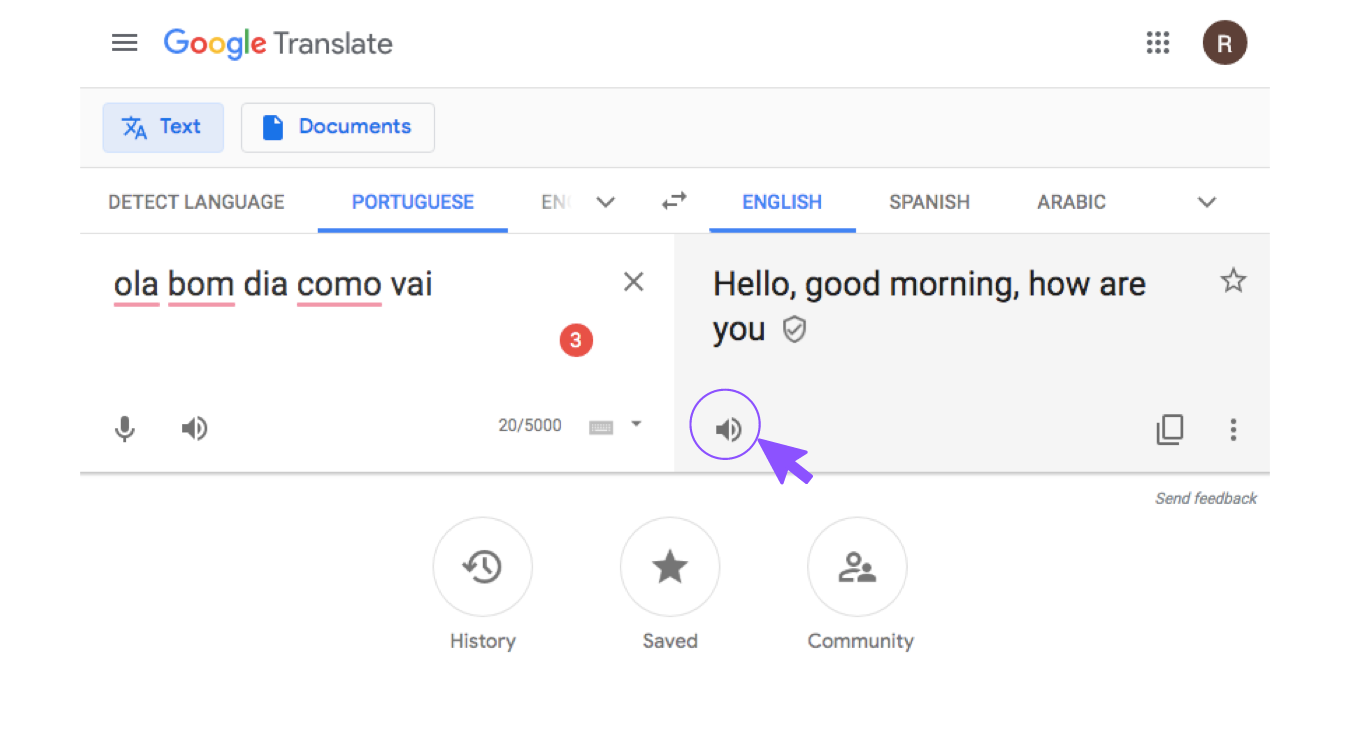
Google also has a feature in its search function that lets you see how different words are pronounced, including the differences between the British and American pronunciation, and how exactly you should move your lips.
It even lets you practise and gives you some help on how to improve your pronunciation.
How to do it:
- Navigate to the Google search bar.
- Search for “How to pronounce ________”.
- Press the little speaker icon.
- Click the “Practice” button to get feedback on your pronunciation.

2. You can translate a word while browsing with a single tap
Need a quick translation of a word as you’re reading? Google to the rescue.
With a Google Translate extension for Google Chrome (and Firefox), you can easily get a translation for any word you see on a webpage while you’re browsing the Internet. Just highlight the word and translate it without navigating to another page.
How to do it:
- Download the Google Translate browser extension.
- Find a phrase or word you’d like to translate.
- Highlight the word.
- Click the translate icon.

Here’s what the translation looks like:
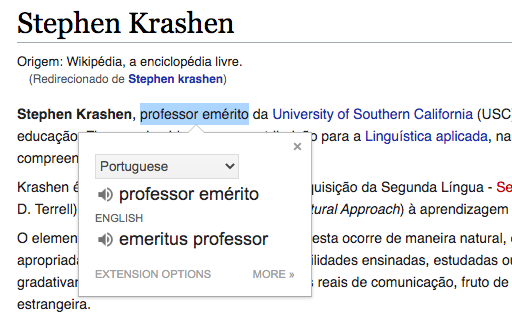
Pro tip: This could be particularly useful when used in conjunction with the on-page subtitles and transcript of the English Learning for Curious Minds podcast.
3. You can translate full web pages
This is great if there’s a website you really need to read but the language is too difficult for you. I use this all the time when I am trying to figure out how to change my cell phone provider or when I don’t understand something I need to do for the Brazilian government.
You can also use it to read a blog post or article that’s a little too challenging for you but that you’re really interested in.
How to do it:
- Copy the URL for the website you’d like to translate
- Past the URL in the Google Translate bar
- Click the link.
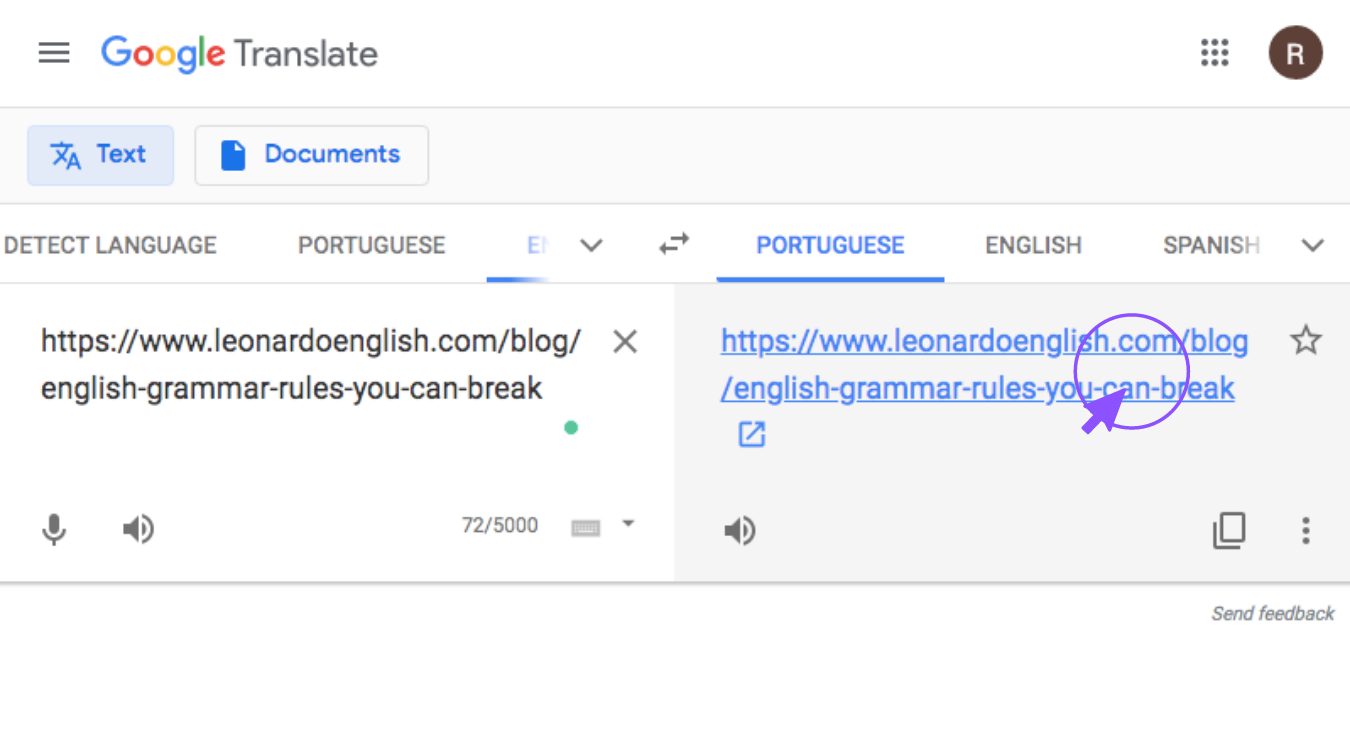
Here’s an example of what the resulting translated page looks like:

4. You can upload a document and have it translated
This is another feature I use all the time now that I know about it—Google Translate for English translations of entire documents. You just upload your document and then view the translated version right in your browser. I would not have been able to understand the contract I signed for my apartment without this.
How to do it:
- Click the “documents” button on the Google Translate home page.
- Upload your document.
- Read your translated document right in the browser window.
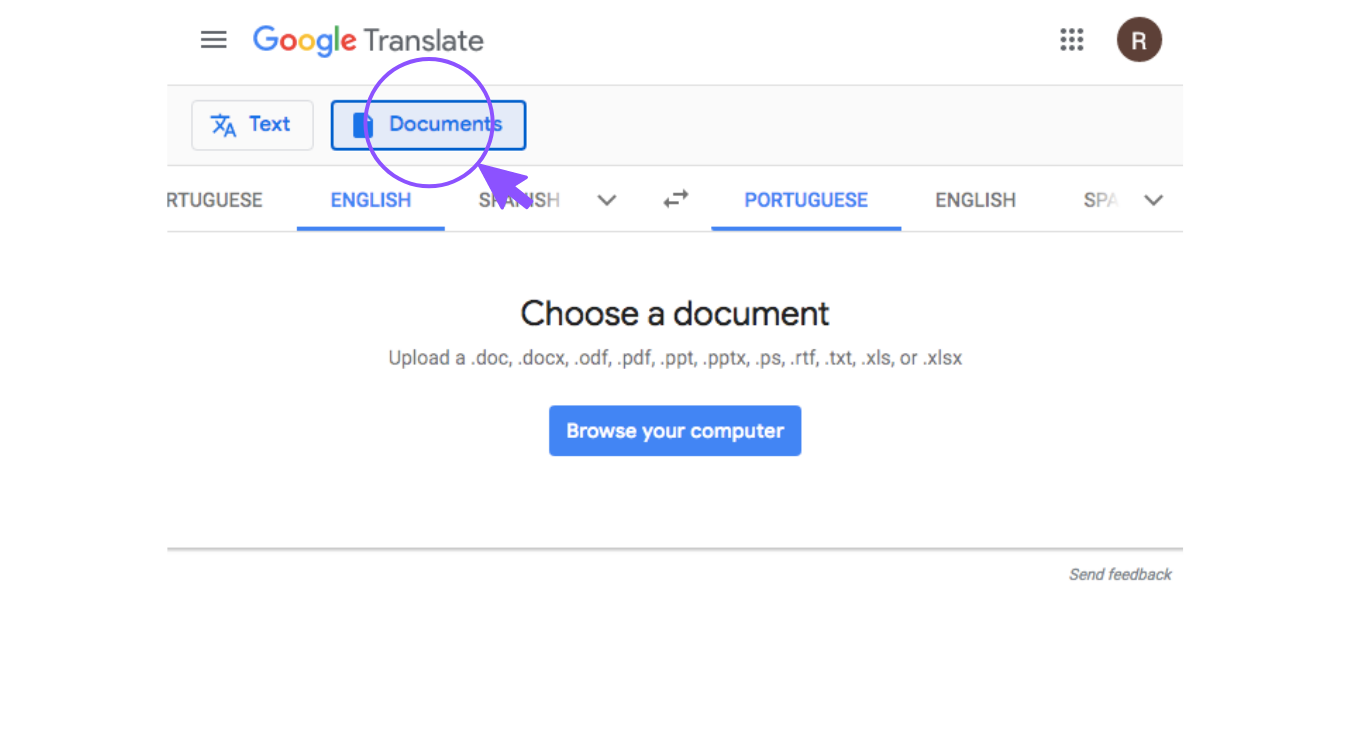
5. Use your camera to translate on the fly
For me, this is probably the coolest feature. You can take a photo of anything and Google will translate any text from the image for you. I’ve used this several times for menus in Brazil and it has worked really well.
Keep in mind that, for this one, you need to use the Google Translate app on your phone.
How to do it:
- Download the Google Translate app to your Apple or Android device.
- Click the camera icon.
- Take a photo of the thing you’d like to translate.
- Click “Scan”.
Watch the video below for a tutorial.
6. Google Translate for English voice and conversation translations
This is another really handy feature. Not only does Google translate voice input into your language of choice, but you can translate an entire conversation with someone. It’s like Google acts as an interpreter.
I don’t use this often in Brazil because I am learning the language, so I like to actually practise speaking. If you have gone to the trouble of finding an English conversation partner, you probably want to actually have a conversation with them.
Still, this can be useful if you’re travelling somewhere where you don’t have any language in common. For example, I used the conversation feature when I was travelling through rural Hungary. I spoke no Hungarian and I occasionally met people that spoke no English. This helped us communicate.
It doesn’t let you have an easy conversation, but it works well enough in a pinch!
How to do it:
- Open Google Translate on your phone.
- Click the “Conversation” icon with two microphones.
- Speak into your microphone. Google will playback the translated version.
- Then your partner can also speak into the microphone, and you will hear their version.
Here’s a video with detailed instructions on how to use it.
7. Save common phrases
This is another fun feature: you can save your favourite phrases in the app or on the web. This is great for when you see something you want to remember but don’t necessarily have time to write it down in your vocabulary journal or add it to your English vocab app.
How to do it:
- Translate something in your web browser or on the phone app.
- Click the little star beside the translation to save it.
- To see the phrases you’ve saved, click the “Saved” button.
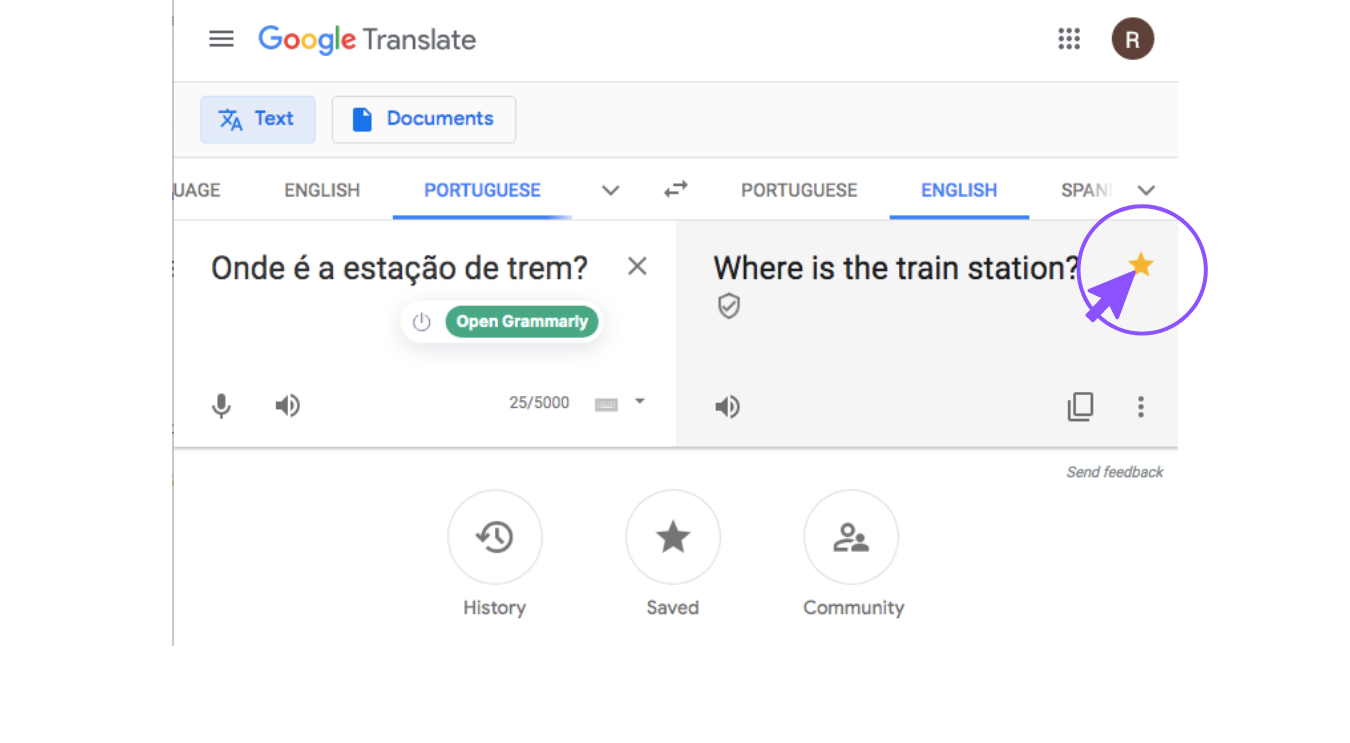
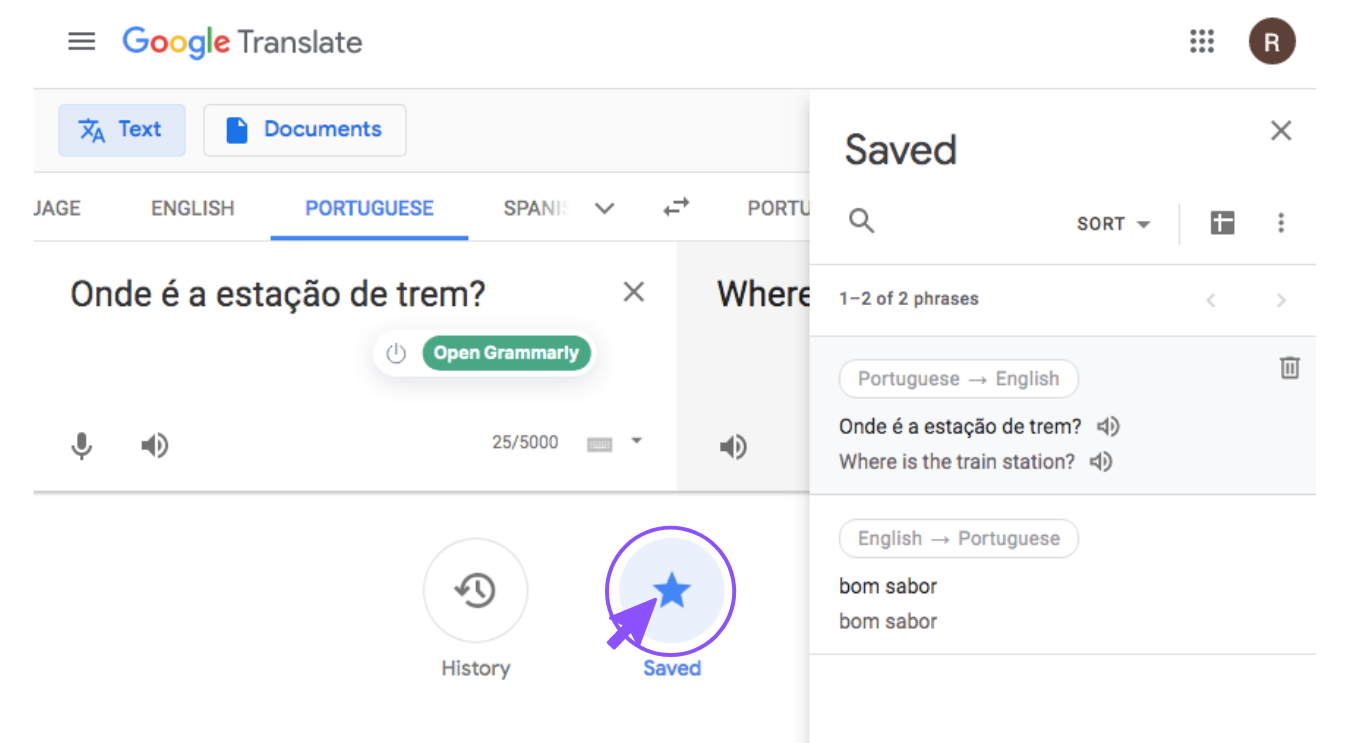
8. You can save languages to your phone to use them offline
This is another great feature that’s available on the phone app. Sometimes you might want to get a translation but you’re not connected to the Internet—maybe you’re travelling and there’s no wifi and no signal to use your data.
Google Translate lets you download a language, like English. That way, you can use the Google Translate app normally, even without Internet access.
(This can also be really handy if you are listening to an English podcast offline.)
How to do it:
- Open the Google Translate app on your phone
- Click the three vertical dots in the top right corner of the screen
- Click “settings”
- Click “offline languages”
- Choose the language you want and then click the download button.
Here’s a video with more detailed instructions:
9. Transcribe and translate in real-time
Transcribing is the process of turning speech into written text. Google Translate allows you to speak in your native language, and it will translate what you say to another language and write that down. It is basically a talk-to-text translator.
This feature might be really convenient if you’re writing an email or a text message to someone. Instead of typing it out, you can just say what you want to say out loud, in your own language. Google will translate it and turn it into text.
If you really want to have some fun, instead of writing something in your mother tongue, why not try to say it out loud in English and then Google will translate it back into your mother tongue for you?
This is a new feature, so there is currently only support for it in a few languages: English, German, Hindi, French, Portuguese, Spanish, Thai, and Russian.
How to do it:
- Make sure you have the newest version of Google Translate.
- Choose the language you wish to speak and the language that Google Translate will transcribe to.
- Tap the “transcribe” button.
- Speak in the first language, and watch it transcribe to the second language.
Here’s a video on how to do it:
Google Translate can help, but it’s not perfect.
Google Translate has been an invaluable tool for me on my Portuguese learning journey and throughout my travels. I’m sure you’ll find Google Translate for English just as useful.
But I want to emphasise that, as useful as it is, it’s no substitute for a real dictionary or real conversation practice, and it is far from perfect.
At the end of the day, it is consistent practise that will help you become fluent in English. Language apps are great, but they won’t teach you a language by themselves. You have to put in the work.
If you want to get fluent in English, your best bet is to design your own English immersion course. Then practise each of the four skills: listening, speaking, reading, and writing. Doing that consistently, over time, is how you’ll improve.
So: find an English activity you like doing, and then do it. If you get stuck, Google Translate can almost certainly help.




